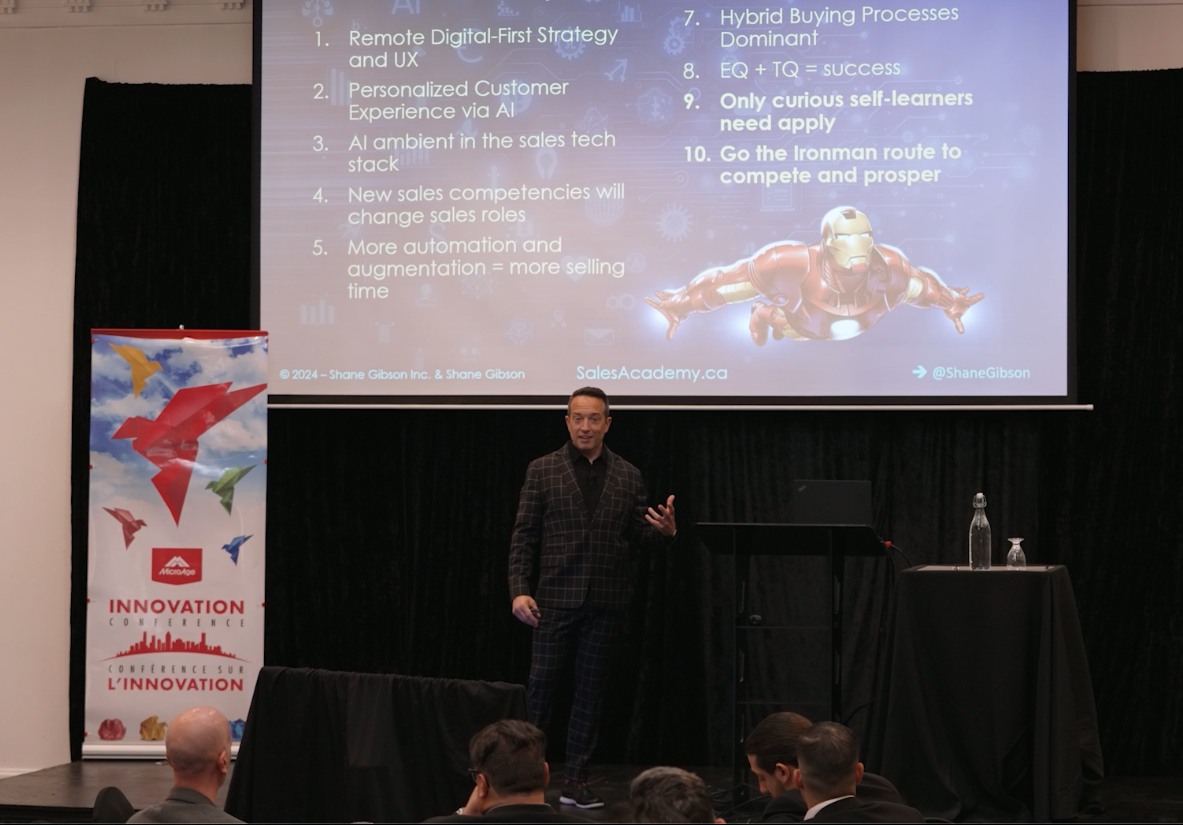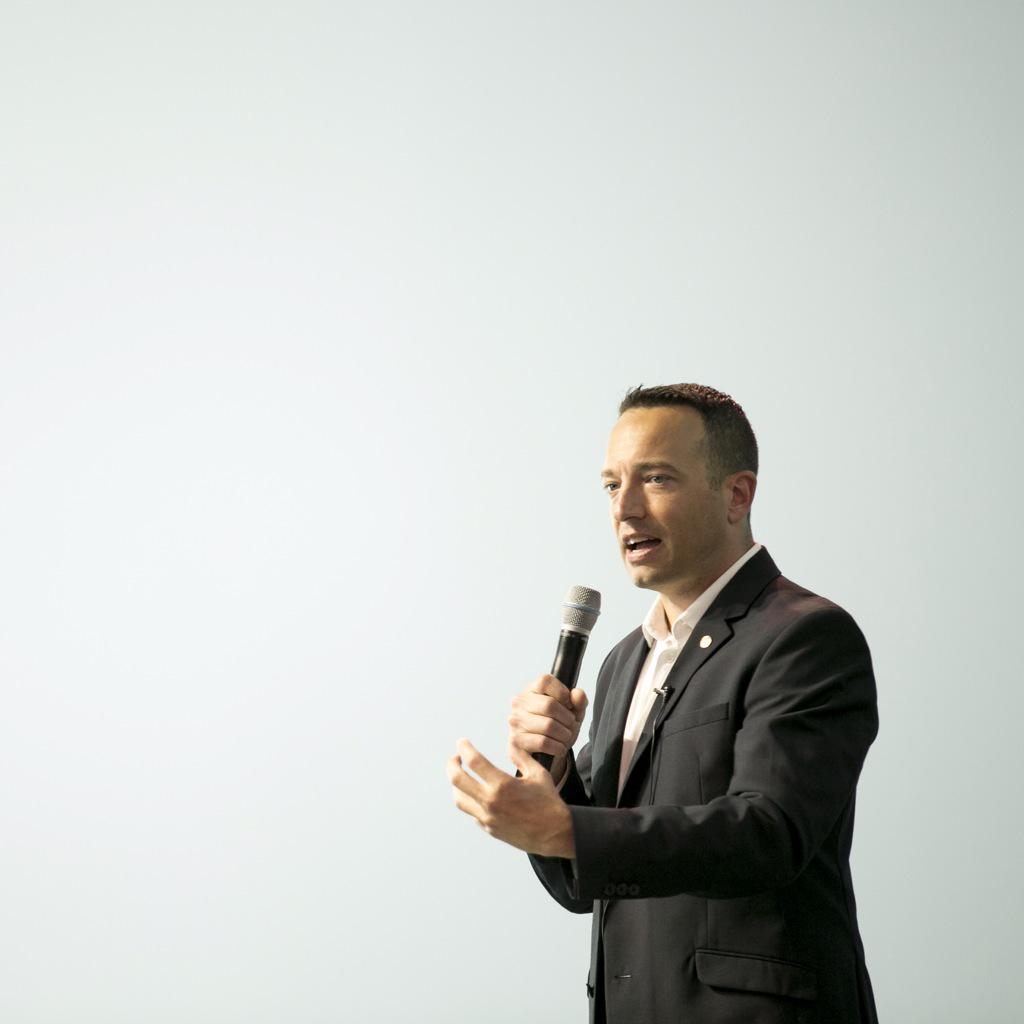It’s been a full year since I delivered my AI keynote as a speaker at the MicroAge Innovation Conference in Montreal. That session was designed to equip IT vendors, MSPs, MSSPs (Cybersecurity), and sales leaders in the channel with a clear, practical perspective on artificial intelligence.
At the time, most of the conversation around AI in sales was centered on curiosity. There was excitement, but also a lot of uncertainty. One year later, the landscape looks very different.
AI is no longer an edge trend. It’s at the center of modern B2B sales, especially in the channel. Despite that shift, the fundamentals of high-performance sales haven’t changed. Buyers still value trust. They still want expertise, responsiveness, and relevance. And they still choose vendors who understand their needs better than anyone else.
What has changed is the speed of the game. The top channel sellers are embracing automation and augmentation. The rest? They’re falling behind.
Here’s AI Sales Keynote from MicroAge’s Annual MSP Conference:
The Hidden Gap in AI Adoption Across the Channel
Here’s something I’ve noticed over the past 12 months: most sales professionals and sales leaders are not leveraging AI to its full potential.
They’re not using custom GPTs tailored to their ideal clients, offers, or objection patterns. Sales leaders are not leveraging AI to help them coach better, more often with more insights – even though it’s entirely possible. They’re not taking advantage of tools like Fathom or Gong to transcribe, summarize, and analyze their sales calls.
In fact, many teams are still manually updating their CRMs, writing proposals from scratch, and running their follow-up on spreadsheets. They’re spending time on tasks that can be automated, while missing opportunities to focus on higher-value activities like coaching, creative outreach, and strategic discovery.
That’s where the biggest opportunity lives right now. AI, used with intention, allows you to free up hours every week. Not to do less, but to do more of the things that drive trust, pipeline, and conversions.
The Core Fundamentals Still Win
Despite all the noise around new tools and platforms, the basics still matter. Discovery, follow-up, thought leadership, and personal branding are not going away. They’re just evolving.
Here are the pillars I continue to teach and use:
- Consistent, quality lead flow aligned to an ideal client profile
- Strong discovery conversations driven by curiosity and a tested framework
- A follow-up system that blends human connection with automation
- High-converting proposals based on real business outcomes
- The smart use of AI to increase speed and scale without losing personalization
AI doesn’t eliminate the need for these. It enhances them.
When I first heard AI described as an “Ironman suit for salespeople” by Gabe Larsen , it resonated with me. Because it wasn’t hype. The metaphor makes it real. The best sales teams are still doing the work. They’re just doing it with better tools, more speed, and far fewer bottlenecks.
Selling Across 25+ Channels: The New Normal for MSPs and MSSPs
Here’s a stat from the keynote that still turns heads. The average B2B decision-maker is now active on over 25 different channels during their buying journey.
That includes:
- Video meetings
- LinkedIn and social media
- Peer communities
- Review sites
- AI bots and chat tools
- Procurement platforms
- Internal researchers, assistants, and gatekeepers
- AI search tools like ChatGPT, Gemini, and Perplexity

This means your prospects are researching, comparing, and shortlisting vendors long before they ever respond to an email or accept a sales call. If you’re not present in those places, or if your content isn’t discoverable by AI tools, you’re already out of the running.
Channel sales today requires not just multichannel strategy, but real adaptability. Your messaging, tone, and value proposition need to work across all these formats. Your team must be ready to respond quickly, consistently, and in the medium the buyer prefers.
AI as a Sales Accelerator, Not a Shortcut
Here’s one of the core principles I continue to emphasize. AI is not a shortcut. It’s an accelerator.
When applied correctly, AI helps you spend more time where it counts. It enhances your strengths. It automates low-impact work. It amplifies your message and improves the quality of your outputs.
Here’s where I’ve seen the most impact in the channel:
- Pre-call research using AI-powered sales intelligence
- Real-time transcription and call summaries
- AI-generated proposals built from call data
- Personalized email sequences customized using buyer behavior and persona data
- Custom GPTs for writing, objection handling, and value messaging
- Lead scoring based on real buying signals and sentiment data
Each of these creates micro-advantages. Over time, those small wins stack up.
Improving Five Funnel Metrics by 10 Percent
One of the most actionable frameworks I share in my keynote is simple. If you improve five key areas of your sales funnel by just 10 percent, you can create a 50 percent lift in revenue without hiring more reps or increasing marketing spend.
These areas are:
- Lead generation (quality and volume)
- First contact conversions
- Discovery-to-proposal rates
- Proposal-to-close conversion
- Follow-up effectiveness
AI supports each of these steps when used strategically. It helps you target the right buyers, write better copy, qualify faster, and stay top of mind across platforms.
The real win comes when you align these enhancements with a strong, repeatable sales process. That’s where the sales machine really starts to perform.
A Preview of ChannelNext Central: New Tools, New Thinking
At ChannelNext Central in Niagara, I’ll be delivering an all-new keynote for IT vendors, cybersecurity professionals, MSPs, MSSPs, SaaS founders, and channel builders.
It’s called: Building an AI Sales Machine – Your 24/7 Second Brain
This session is designed to take what we covered last year and push it further. We’re not just talking about AI tools. We’re showing how to connect them, scale them, and turn them into a system that runs around the clock.
Here’s what you can expect from the new keynote:
- How to build and train custom GPTs for your sales team
- A new competency map for 2025, including tech fluency and agentic collaboration
- Use cases for AI-generated content, proposals, and follow-ups
- A detailed walkthrough of the new AI Discovery Call Framework
- How to combine automation and human creativity for maximum results
- A demo of how I create 55 content pieces from a single recording using AI
This new keynote is built specifically for the channel. We’ll cover examples for MSPs and MSSPs, with content strategies designed for cybersecurity providers and SaaS firms selling to complex buying groups.
Looking Ahead: What Sales Teams Must Do Now
As I look back on the keynote from last year, the message hasn’t changed. What’s changed is the urgency. What AI has also done is changed the sales competency map, and that is changing who we recruit and how they need to sell, and how leaders must lead.

We are in a market where buyers are informed, tools are available, and expectations are higher than ever. The sales teams that win are the ones who lean into change. They test, iterate, and stay human in the process.
If you’re leading a sales team in the IT channel and you haven’t taken a serious look at how AI fits into your strategy, now is the time. Not next quarter. Not next year.
The window to build your AI sales machine is open now. Those who wait will find themselves chasing the curve.
I look forward to sharing more insights live in Niagara at ChannelNext Central. Bring your questions. Bring your team. We’re going to go deeper, get tactical, and build something that lasts.
Too book Shane Gibson keynote AI speaker for your next conference contact us.


